This article describes the existing various active noise reduction topologies, and analyzes the difficulties encountered by original designers and contract manufacturers in the production process. Another difficulty in the development process is the active noise reduction loop itself. This article will describe the necessary steps to design an active noise reduction feedforward headset based on the AS3415 active noise reduction chip.
Before we officially start making an active noise-cancelling headset, we need special audio equipment. The first is an audio measurement system for measuring frequency response and phase response. Available audio devices include Audio Precision, Brüel Kjaer, Soundcheck, etc. In addition to the audio measurement system, the human ear simulation device is also an important part, such as IEC711 (in-ear active noise reduction products) or HeadTorso simulator (head-mounted and earmuff-type products) from Head AcousTIcs, Brüel Kjaer or GRAS. The human ear simulation device can be used to simulate the human ear response when measuring the characteristics of the earphone. These artificial ears integrate a highly accurate microphone that can measure the sound that people actually hear when wearing headphones. A loudspeaker is also needed to measure the passive attenuation characteristics of the headset, which is part of the filter design. This speaker should be a two-way speaker, and preferably a coaxial two-way speaker to ensure that the high-frequency and low-frequency transmission distances from the speaker to the headset are equal. Finally, the AS3415 evaluation board is required, which contains all necessary connectors and preamplifiers to make the performance test process as smooth as possible.
Why perform performance tests on headphones?
The acoustic performance of each earphone is different. The reason is simple, because headphones use different components, such as speakers with different impedances and transfer coefficients. And the elastic pads of each earphone and the front and rear acoustic cavity are also different.
To make active noise reduction headphones, it is important to understand the characteristics of the headphones, so as to obtain good noise reduction performance. Active noise reduction feedforward headphones use ECM microphones to capture noise outside the headphones. The electronic circuit will generate an anti-noise anti-signal, and then play it out through the speaker. In theory, the ANC loop is a simple inverter circuit, but this is not the case. Because different components of the headset affect the frequency response and phase response, simple inversion cannot make ANC meet the performance requirements. In order to understand the performance of the headphones in terms of gain and phase, performance testing of ANC headphones is particularly important.
In order to get the ideal ANC filter curve, we must use the equipment mentioned in the first paragraph to make three measurements. The first measurement is passive attenuation measurement, as shown in Figure 1.
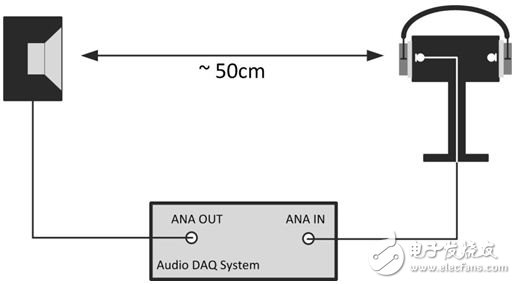
Figure 1: Feedforward performance measurement 1
We use coaxial speakers to emit 20Hz-22kHz swept sound waves and measure the sound waves that reach the human ear. Sound waves reaching the human ear can be measured using the microphone inside the human ear simulator. In this way, we measured the noise attenuation caused by the headset itself, that is, passive attenuation.
As shown in Figure 2, the second term is the frequency response measurement of a microphone that captures noise. Similarly, the sine sweep signal is played through the coaxial speaker and collected by the ANC microphone.
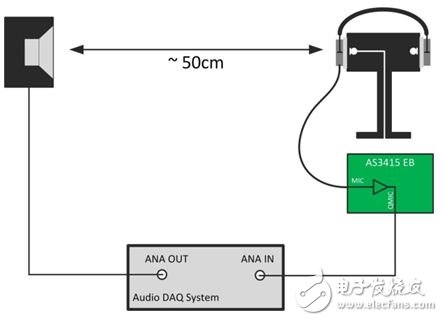
Figure 2: Feedforward performance measurement 2
The third and final item (Figure 3) is the frequency response and phase response measurement of the internal speaker of the headset. The frequency sweep signal of 20 Hz to 22 kHz is sent by the speaker inside the earphone, and the signal is collected by the microphone in the artificial head for testing. This test measures the transfer function of the noise reduction signal when it is broadcast through the speaker, and how the signal is received by the human ear. Phase is very important for these three measurements. If the anti-noise signal broadcast by the speaker has the same phase as the noise entering the human ear from the environment, the noise will not only be attenuated but also amplified.
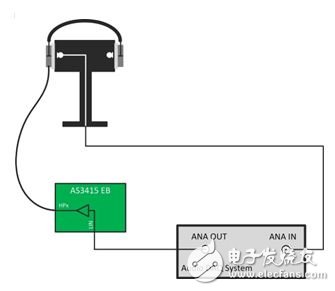
Figure 3: Feedforward performance measurement III
Calculate the ideal value of the active noise reduction filter
Once these three measurements are completed, we can use the measurement results to calculate the ideal value of the ANC filter. The required filter amplitude is calculated as follows:

The phase of the required filter is calculated as follows:

The calculation result can be easily obtained through an Excel table. A filter example is shown in Figure 6. The frequency response and phase response of the example show that it is difficult to make an ideal noise reduction signal using only a full-band inverting amplifier.
Filter development
The key to a good ANC headset is the design of the filter. If the filter design is unreasonable, even the best ANC chip is useless. The goal of filter design is to match gain and phase response as much as possible. The better the match at a particular frequency, the better the ANC performance. Because it is analog signal processing, the simulation of the filter is usually done through the spice simulation tool. Figure 4 is a spice simulation circuit that reflects the signal path of the ANC microphone filter.
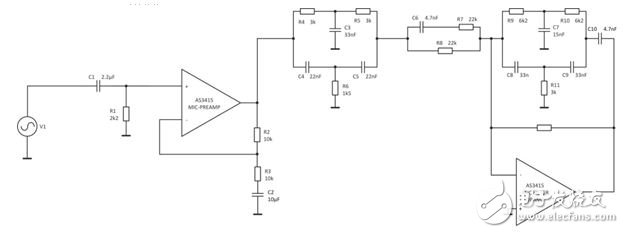
Figure 4: Spice filter simulation example
The purpose of the ANC filter design engineer is to match the gain and phase response in the filter simulation circuit of Figure 4 with the calculated ideal curve. The typical filter used by people now has a first-order low-pass filter, a notch filter, an elevated shelf, and a low shelf filter. The designer must understand the different topologies and calculation methods for the cutoff frequency, passband, and stopband. This is certainly not a simple task, especially when they are not used to using spice simulation tools and analog filter development tools.
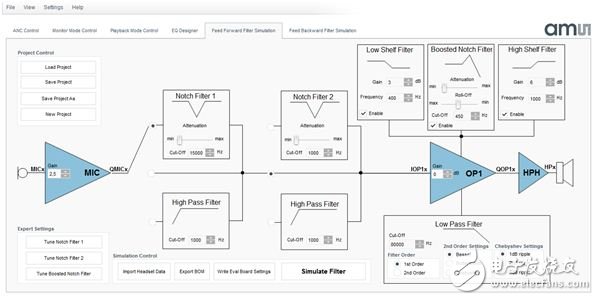
Figure 5: AS3415 feedforward filter simulation tool
To solve this problem, the AS3415 evaluation software integrates a feedforward filter simulation tool, as shown in Figure 5. Design engineers can use this tool to design ideal ANC filters. This tool provides a set of pre-defined filter architectures, replacing the practice of modifying part values ​​and filter structures. Based on filter structures simulated for many different customers, these predefined filter structures can cover 90% of ANC acoustic requirements. Figure 6 shows the simulation results of the tool. The green curve represents the ideal ANC gain and phase response, and the blue curve shows the simulation results of the ANC filter made using the tool of FIG. 5. When designing a filter, one thing is very important, that is, which frequency bands we should pay attention to. The operation of ANC headphones has a specific frequency range. This is not due to the limitations of AS3415 itself, but is related to the speed of sound propagation and the acoustic characteristics of the headphones. If we only focus on the gain response in the ideal filter curve, it is easy to design a filter that fits this curve. But the problem is that the phase of the ANC filter design must also be matched at the same time. Since the phase at higher frequencies is almost 180 degrees rotated, the designed filter is likely to match the frequency response but not the phase. Depending on the different headphones and their phase response, we can usually match filters below 1.5kHz. The higher frequency parts need to be attenuated as much as possible. If these unmatched high-frequency parts are not attenuated, noise may be introduced. We attenuate the noise in the low frequency part, but if the phase of the high frequency is mismatched, it will cause the noise to be amplified. In order to avoid this phenomenon, we will try our best to reduce the gain in the unmatched area. The green transparent area in Figure 6 represents the smallest gain and phase mismatch we can usually achieve. The red area is the part we want to attenuate as much as possible. A good balance must be reached between high frequency attenuation and phase response. If it is attenuated too much at high frequencies, it will affect the phase response of low frequencies, which may lose the effect of ANC.
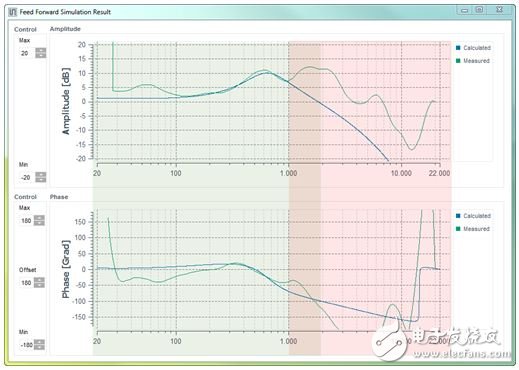
Figure 6: Simulation results
Filter inspection and ANC test
After obtaining a satisfactory filter curve, the AS3415 filter simulation tool also provides a bill of materials output function. Because the tool matches the AS3415 evaluation board, the items listed in the bill of materials can be soldered to the evaluation board to test the performance of the ANC with the filter. The test includes two items: one is the passive attenuation test when the headset is worn on the artificial head, and the other is the frequency response test when the AS3415 chip is turned on and the feedforward noise reduction function is configured. The ANC performance is calculated as follows:

These calculations can be completed through an Excel table and generate a graph of the ANC noise reduction performance curve in the audio range. This ANC noise reduction performance curve is very important and common in the design and production process of noise reduction headphones. AS3415 development tools and application notes and templates related to the development of ANC noise reduction headphones are now available.
Pooling Pumps,Dc Water Pump,High Pressure Water Pump,Self-Circulation Water Pump
Sensen Group Co., Ltd.  , https://www.sunsunglobal.com